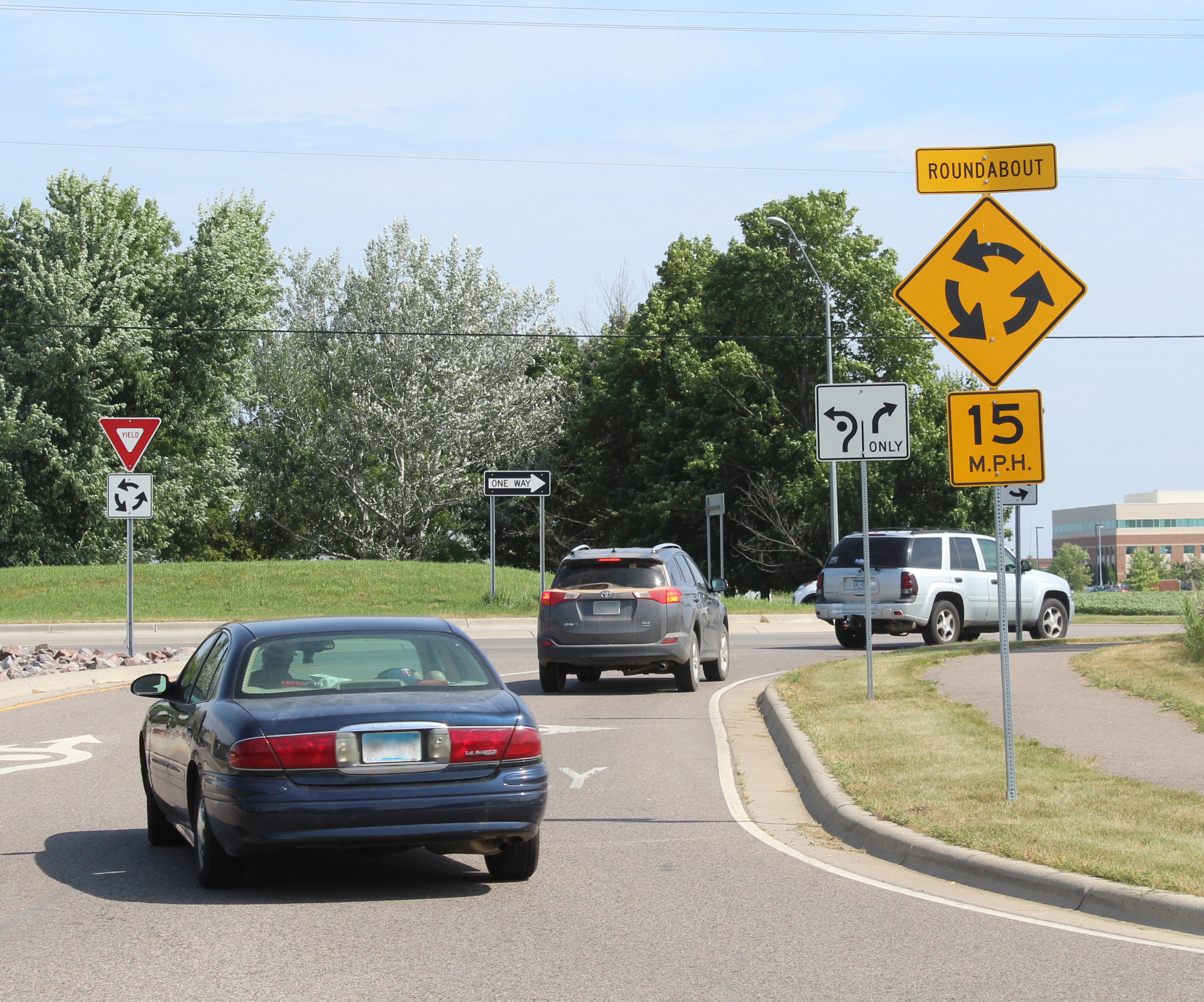All About Roundabouts
Roundabouts. Where old world street design and modern city planning intersect. Or rather, merge.
According to the Minnesota Department of Transportation (MNDOT), approximately 200 roundabouts or traffic circles have been built in the state over the past 25 years. One of them is adjacent to the north entrance of CentraCare Plaza in St. Cloud. And three additional roundabouts have been built in Monticello just this past year.
While new to motorists, among the reasons that roundabouts have become so popular include:
- Better safety. Crashes at four-way intersections have the potential to be at high speeds and of the T-bone accident variety, where one vehicle crashes into the side of another. Roundabouts have been shown to decrease fatal crashes by 86 percent, because the crashes that result from them generally are at lower speeds and occur at the vehicle’s corners.
- Less delay. Roundabouts can more efficiently handle high levels of traffic than intersections with stop signs or signals. And when people stay on the go, that leads to…
- Reduced vehicle emissions and fuel consumption. MNDOT reports a 30 percent improvement in this area.
- Better access for large trucks and buses. Roundabouts are designed so trucks and buses can maneuver through them. Something that isn’t true for every four-way intersection.
So while roundabouts offer these positives, they can still be stressful for motorists who don’t encounter them often. Remember when driving through a roundabout:
- Watch your speed. To safely drive through a roundabout, you should slow down to around 15-25 miles per hours. You should not pass another car while going through a roundabout.
- Stay in the right. All traffic should proceed one-way counterclockwise through a roundabout.
- Yield-at-entry. Wait until there are no cars from your left before entering the roundabout. Even if the roundabout has multiple lanes, you should still wait. A vehicle from an inside lane could change lanes while in the roundabout.
- Keep moving. Once you are in the roundabout, don’t stop. If you miss your turn, you can continue to ride in a circular fashion until the correct road approaches again. And if you are in one when responding emergency vehicles enter, wait to exit the roundabout and then pull over to the side.
- Stay alert for pedestrians and bicyclists. Roundabouts aren’t just for vehicles. There are often crosswalks across each road leading into a roundabout. If there are pedestrians and bicyclists present, you need to wait for them — just as you would at any other intersection.
Please review the following blogs for more information about the following driving topics:
- Make sure all ages are riding safely. Check your child’s car seat and that it is correctly installed.
- Distracted driving — take place in the solution. Make your own commitment to driving safely at all times.
- New Minnesota law will ban handheld cellphone use while driving. It is estimated that one in five crashes is due to distraction. Minnesota joins 16 other states and the District of Columbia that have made handheld phone use while driving illegal.
